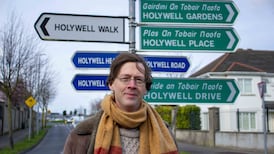Alfredo Di Stéfano, who has died aged 88, was the inspirational leader of the Real Madrid team of the 1950s, one of the most successful club sides of all time, which won five European Cups in a row.
Di Stéfano was a centre forward of versatility and authority: his greatness lay not only in his prolific goalscoring, but in his ability to influence play in all areas of the pitch in an era when players stuck to their positions and were relatively static. His stamina was legendary and even in his veteran years he could bring off a sliding tackle in his own penalty area, then in the next minute pop up at the other end for a shot at goal.
The young Bobby Charlton watched Di Stéfano from the stands as a Manchester United reserve at Real's Bernabeu stadium in 1957, and later wrote that his first impression was: "Who is this man? He takes the ball from the goalkeeper, he tells the full backs what to do; wherever he is on the field he is in position to take the ball, you can see his influence on everything that is happening . . . I had never seen such a complete footballer." Di Stéfano was not as naturally gifted as Pelé or Maradona, but Charlton is one of many former players and managers who regarded him as the best all-round footballer in the history of the game.
Over a 20-year period, Di Stéfano was the guiding light of three teams in three countries: briefly at River Plate, in his native Argentina; at Millonarios of Bogotá in Colombia; and then, most famously, with Real Madrid. Extraordinarily, he also represented all three of those countries, but despite his dominance at club level, Di Stéfano never played in the World Cup finals.
Di Stéfano was born in Buenos Aires, the grandson of immigrants from Capri and son of Alfredo snr, also a footballer, and his wife Eulalia, who was of French and Irish origin. He grew up and learned to play football in the streets of the working-class suburb of Barracas and later, after his father had retired, on a farm on the edge of the city.
In 1949, a footballers’ strike in Argentina prompted Di Stéfano and many other Argentinian players to defect to a breakaway Colombian league that was outside the remit of Fifa and therefore not obliged to pay transfer fees, but able to pay big wages to some of the world’s best players.
With Millonarios, “we succeeded in building a team so strong and so homogeneous”, said Di Stéfano, “that it was hard to find another like it”. But Millonarios’s bubble burst in 1953 when Colombia rejoined Fifa and Di Stéfano suddenly found himself without a club. On the club’s final tour of Europe, Di Stéfano ran rings around the Real Madrid defence and the Spanish club coveted him from then on.
His move to Spain involved an acrimonious transfer deal. Real wanted him and agreed a fee with Millonarios, but so did Barcelona, who tried to outflank Madrid by agreeing a transfer with his former club, River Plate, who still held his official registration, claiming his move to Colombia had been illegal.
He eventually signed for Barcelona but the Spanish football federation failed to recognise the transfer and, in a Solomonic judgment, decreed that the two clubs share him and he play alternate seasons for each. Crucially, however – and the Catalan club claimed, with Francoist backing – the federation gave Real first bite. When Di Stéfano started his first season slowly, Barcelona were persuaded to sell their rights to the player – a decision they would regret.
Four days later he scored a hat-trick against Barcelona, and that was just the start. In just 30 games that 1953-54 season he scored 27 goals, leading Real to the Spanish championship for the first time in 21 years. In 11 seasons at the club he won eight Spanish titles, five consecutive European Cups (scoring in all five finals), the inaugural Intercontinental Cup and was named European Footballer of the Year in 1957 and 1959.
Apex of achievement Real’s apotheosis was the 7-3 victory against Eintracht Frankfurt in the 1960 European Cup final held at Hampden Park, Glasgow. In the autumn of his career he struck up a famous partnership with another great striker of the 1950s, the Hungarian Ferenc Puskás. Both were then in their mid-30s, Di Stéfano balding and Puskás with a pot belly, but that evening more than 125,000 Scottish fans were held spellbound by their sublime, almost exotic skill in what is still regarded as one of the greatest games ever. Di Stéfano scored three goals and Puskás four.
On leaving Madrid in 1964, aged 38, Di Stéfano finally went to play in Barcelona, but for the city’s “other” team, the royalist Real Club Deportivo Espanyol rather than Barca.
After retiring from playing at 40 he managed eight clubs in almost 25 years (three of them on more than one occasion), guiding Boca Juniors and River Plate to Argentinian league titles, and Valencia to the European Cup Winners’ Cup and Spanish title. He returned to his beloved Real Madrid in 1982 but that season ended in despondency when the team finished runners-up in five competitions
His wife, Sara, died in 2005; they had six children.









